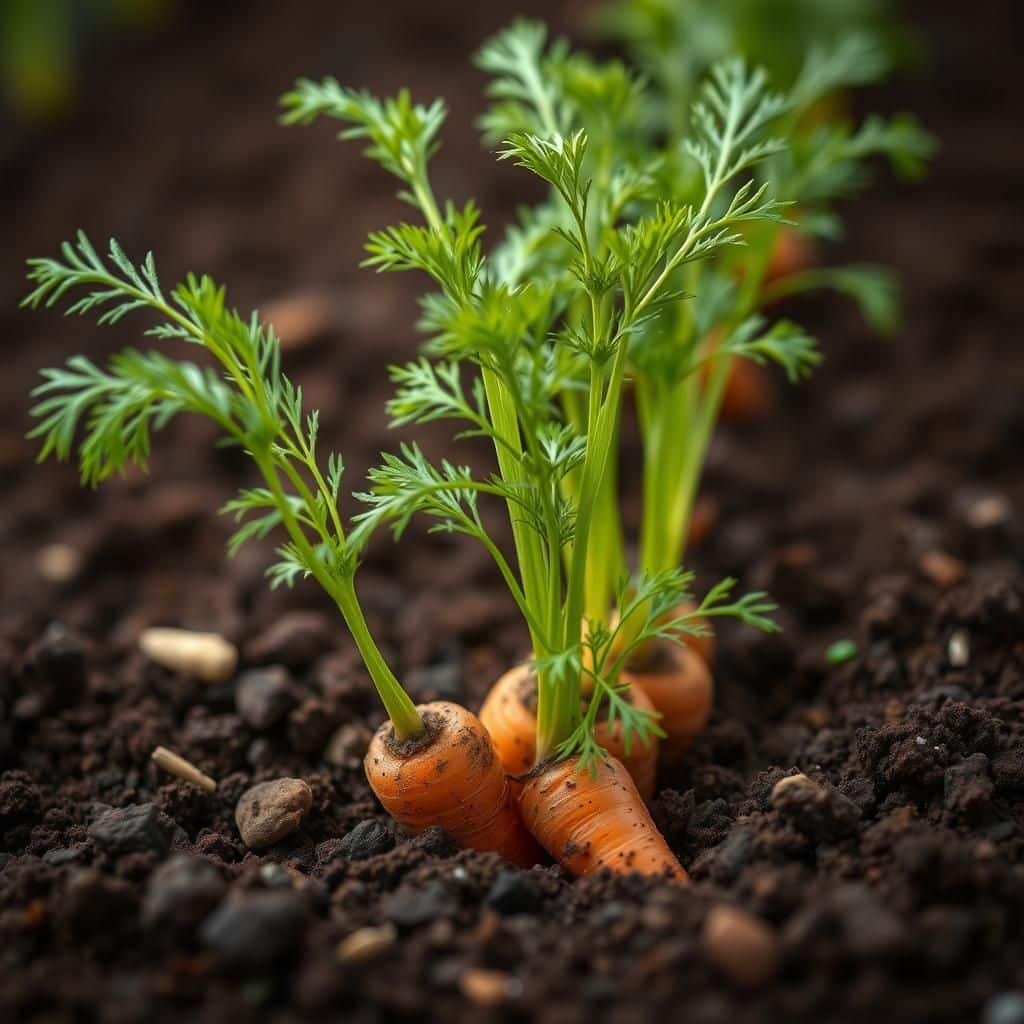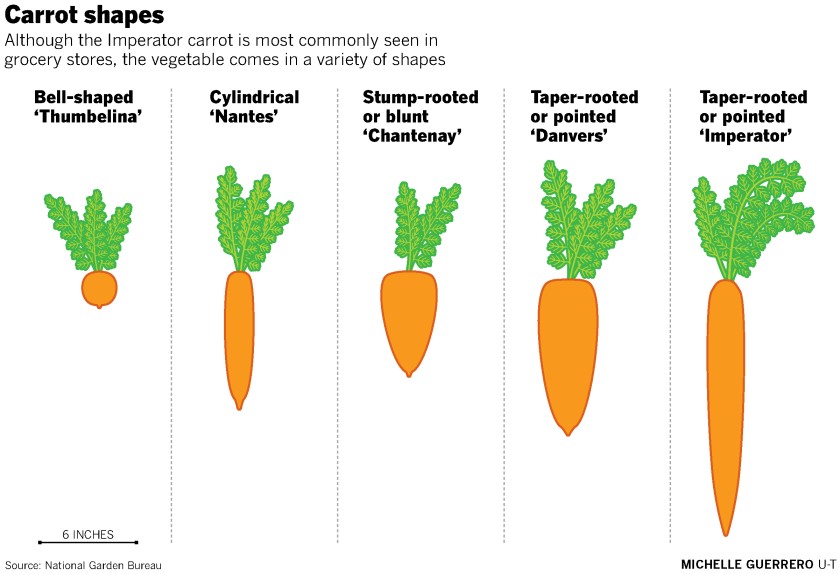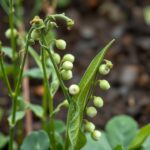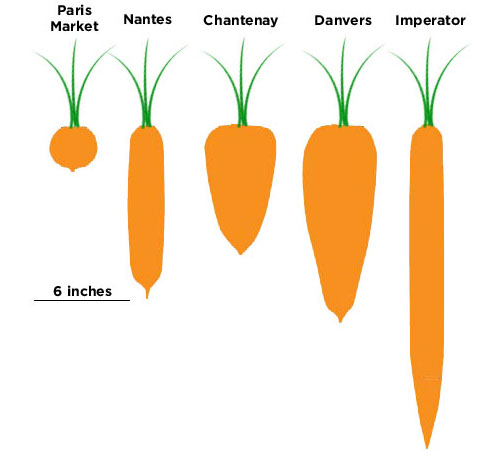Ultimate Guide to Growing Carrots from Seedlings: Tips and Best Practices

Growing carrots from seedlings can be a rewarding and fulfilling gardening experience. As one of the most popular root vegetables, carrots are not only delicious but also packed with nutrients. This ultimate guide will take you through the essential tips and best practices for cultivating healthy carrot seedlings, ensuring a bountiful harvest. Whether you're a seasoned gardener or a beginner, understanding the nuances of soil preparation, watering, and pest management will set you up for success. Join us as we explore the key steps to nurturing your carrot seedlings from planting to harvest, transforming your garden into a vibrant source of homegrown produce.
Starting Carrots from Seedlings: A Comprehensive Guide
Growing carrots from seedlings is a rewarding and fulfilling gardening venture that allows you to enjoy the sweetness of homegrown produce. To start this process, it’s essential to select the right carrot variety based on your climate and soil type, as these factors significantly impact germination and growth. Begin by preparing the soil, ensuring it is well-draining and rich in organic matter; this creates the perfect environment for your seedlings. Once you have sown the seeds or transplanted seedlings, consistent watering and monitoring of pests will be vital for successful growth. With proper care, you can look forward to a bountiful harvest of fresh, crunchy carrots.
Choosing the Right Carrot Varieties
When selecting carrot varieties to grow from seedlings, consider factors such as the length of the growing season, climate, and desired taste or texture. Varieties like Danvers, Nantes, and Imperator cater to different growing conditions and preferences. Short, thick varieties are suitable for heavier soils, while longer, slimmer types thrive in lighter, sandy soils. Additionally, early-maturing varieties can provide a quicker harvest for impatient gardeners, while late-season types are excellent for winter storage.
Soil Preparation for Carrot Seedlings
Preparing the soil for your carrot seedlings is crucial for their successful growth. Carrots prefer loose, well-draining soil that has been enriched with compost or other organic matter to improve structure and fertility. Avoid heavy clay soils that can impede root development. To prepare, till the soil to a depth of at least 12 inches, removing rocks and large clumps that could hinder the growth of the taproot. Testing the soil pH is also beneficial, as carrots thrive in slightly acidic to neutral conditions (pH 6.0 to 7.0).
Watering and Maintenance of Carrot Seedlings
Proper watering is essential for the healthy growth of carrot seedlings. Initially, it’s important to keep the soil consistently moist to facilitate germination, but avoid overwatering, which can lead to rot. Once the seedlings are established, they should receive about 1 inch of water weekly, either through rainfall or supplemental irrigation. Regularly monitor soil moisture levels and consider mulching around the plants to retain moisture and suppress weeds, ensuring your carrots have the best chance for success.
Pest and Disease Management
Effective management of pests and diseases is critical in maintaining healthy carrot seedlings. Common pests include carrot flies and aphids, which can damage the plants and reduce yields. Implementing preventative measures such as crop rotation, using row covers, and encouraging beneficial insects can help keep these pests at bay. Additionally, monitoring for diseases like white mold and root rot is important, as these can spread quickly. Ensure proper air circulation and maintain optimal moisture levels to mitigate disease risks.
Harvesting Carrots
Knowing when to harvest your carrots can determine the quality and taste of the final product. Generally, carrots are ready to harvest when they have reached their desired size, which can vary depending on the variety grown. For an optimal flavor, harvest when roots are firm and colorful, typically about 70-80 days after planting. Gently loosen the soil around the carrots using a garden fork to avoid damaging them, and pull them straight out. After harvesting, brush off the dirt, but do not wash them until you are ready to eat to preserve their storage quality.
| Carrot Variety | Days to Maturity | Size | Flavor Profile |
|---|---|---|---|
| Danvers | 70 | 6-8 inches | Sweet and robust |
| Nantes | 70 | 5-7 inches | Juicy and tender |
| Imperator | 75 | 8-10 inches | Very sweet |
How long does it take to grow carrots from seedlings?

Growing carrots from seedlings typically takes about 70 to 80 days from sowing seeds to harvesting mature carrots, depending on the variety. When starting with seedlings, which are usually transplanted into the garden, the timeline can be somewhat reduced. Seedlings are usually ready to transplant approximately 3 to 4 weeks after germination. The exact timeframe can vary based on factors such as the carrot variety, soil conditions, temperature, and care provided during growth.
The Different Stages of Carrot Growth
Carrots go through several distinct stages during their growth cycle:
- Germination: This stage lasts about 2 to 3 weeks after sowing seeds. Seeds need consistent moisture and warmth to sprout.
- Seedling Stage: When seedlings are about 2 to 4 inches tall, they are usually ready for transplanting, which occurs about 3 to 4 weeks after germination.
- Vegetative Growth: This phase lasts approximately 4 to 6 weeks following transplanting, during which the carrot foliage develops.
- Root Development: The carrots begin to thicken underground, which usually occurs in the last 3 to 4 weeks of growth.
- Maturity: Carrots are generally ready for harvest 70 to 80 days after planting seeds, indicated by the shoulder of the root peeking above the soil.
Factors Influencing Growth Time
Several key factors can influence the growth time of carrots from seedlings:
- Variety: Different carrot varieties have varying days to maturity. Some may be ready as early as 60 days, while others can take up to 100 days.
- Soil Quality: Well-draining, loose soil helps carrots grow faster and healthier. Compacted or poor-quality soil can delay growth.
- Temperature: Carrots thrive in cool weather, ideally between 60°F and 70°F. High temperatures can slow growth and affect size.
- Water Availability: Consistent watering is crucial as it affects germination and root development. Inadequate moisture can result in slower growth.
- Sunlight: Carrots require full sun for at least 6 hours a day; insufficient light can stunt growth.
Preparing Seedlings for Transplanting
To ensure a successful transplant, follow these steps for preparing seedlings:
- Harden Off: Gradually acclimatize seedlings to outdoor conditions over 5 to 7 days before planting. Begin with a few hours of shade, increasing their exposure gradually.
- Soil Preparation: Enrich the planting area with compost or well-rotted manure to enhance soil nutrients and structure.
- Spacing: Ensure to set seedlings in rows about 12 to 18 inches apart to allow for proper root expansion.
- Roots Handling: Handle seedlings carefully, ensuring minimal disturbance of roots to prevent shock during transplantation.
- Water: Water the seedlings immediately after planting to assist with establishing them in the new environment.
Best Practices for Carrot Care
Proper care can significantly affect the growth duration and quality of the carrots:
See also:
- Consistent Watering: Maintain a schedule of regular watering to keep the soil evenly moist without waterlogging.
- Weed Control: Regularly remove weeds competing for nutrients and water. Mulching can help suppress weeds as well.
- Pest Management: Watch for common pests like aphids and root maggots. Use organic methods to protect seedlings effectively.
- Fertilization: Apply a balanced organic fertilizer in moderation to promote healthy growth without encouraging excessive foliage at the expense of root development.
- Monitoring Growth: Regularly check the progress of the carrots and make adjustments in care as needed based on their growth conditions.
Signs That Carrots are Ready to Harvest
Identifying the right time for harvest is crucial for quality:
- Size: Typically, when carrots are 1 to 2 inches in diameter, they are usually mature enough to harvest.
- Color: A bright, vibrant color indicates ripeness. For orange carrots, this is usually a deep, rich orange hue.
- Shoulder Visibility: Look for the shoulder of the carrots showing above the soil surface; this is a key indicator of readiness.
- Tap Root Condition: Gently tug at the greens; if it comes out easily and the roots feel firm, they are ready for harvest.
- Time to Maturity: Keep track of your planting date; adhering to the expected 70 to 80 days will give you a good guideline for harvesting.
Can carrots be transplanted from seedlings?

Transplanting carrots from seedlings is generally not recommended, as carrots are root vegetables that typically develop better when sown directly into the soil. Carrots have long taproots that can be disturbed easily, which may hinder their growth and development if transplanted improperly. However, in certain situations, transplanting can be achieved with careful planning and execution. Here's a deeper exploration into the topic.
Understanding Carrot Seedlings
Carrot seedlings are tiny plants that emerge from carrot seeds after germination. They are delicate and require certain conditions for optimal growth. To successfully grow carrots from seedlings, gardeners must pay attention to the following aspects:
- Soil Quality: Use well-draining, loose soil to encourage healthy root development.
- Light Conditions: Carrots need full sun for at least 6-8 hours a day to thrive.
- Watering Needs: Consistent moisture is crucial, but overwatering can lead to root rot.
Challenges of Transplanting Carrots
Transplanting carrot seedlings poses several challenges that can affect their growth. The primary issue relates to their fragile roots and the sensitivity of the taproot. Some challenges include:
- Root Disruption: Moving seedlings can easily damage their delicate taproots.
- Growth Delay: Transplanting can slow down growth as seedlings recover from root disturbance.
- Increased Stress: Transplant shock can lead to wilting or stunted growth.
Best Practices for Transplanting Carrots
If you decide to transplant carrot seedlings, following the best practices can enhance the chances of success. Here are some recommended strategies:
- Timing: Transplant seedlings when they are about 2-3 inches tall and before they develop extensive roots.
- Preparation: Prepare the new bed by loosening the soil and ensuring adequate moisture.
- Cautious Handling: Gently separate the seedlings to minimize root damage when transplanting.
Alternatives to Transplanting Carrots
For those who prefer a more straightforward approach, there are alternatives to transplanting carrot seedlings that can yield better results. Consider these methods:
- Direct Sowing: Plant carrot seeds directly into prepared soil to facilitate natural growth patterns.
- Seed Tape: Use seed tape to ensure proper spacing and reduce thinning after germination.
- Container Growing: Grow carrots in containers where soil conditions can be precisely controlled.
When to Consider Transplanting Carrots
Although it's usually discouraged, there are situations when you might consider transplanting carrot seedlings. Here are some scenarios:
- Limited Space: If you need to maximize your garden area, transplanting can help manage space.
- Overcrowding: If seedlings are sown too closely together, transplanting can provide necessary spacing.
- Seasonal Adjustments: In climates with short growing seasons, starting indoors can give carrots a head start.
What is the trick to growing carrots?

To grow carrots successfully, some essential tricks can ensure bountiful harvests. Understanding the growing conditions, proper planting techniques, and care methods are crucial. Here are some key aspects to consider:
Soil Preparation
The foundation of growing carrots lies in the quality of the soil. Carrots thrive in well-draining, loose, and sandy soils, which allow their taproots to develop without obstruction.
- Loosen the soil to a depth of at least 12 inches to avoid any rocks or compacted layers.
- Add organic matter such as compost or well-rotted manure to enrich the soil and improve its texture.
- Ensure the soil’s pH level is between 6.0 and 6.8 for optimal growth.
Seed Selection and Planting
Choosing the right variety of carrot seeds is vital for your climate and soil conditions. Early varieties mature faster, while late varieties can store better.
- Select disease-resistant seeds for better yield and sustainability.
- Plant seeds at a depth of 1/4 to 1/2 inch and space them about 1 to 3 inches apart to prevent overcrowding.
- Water the seeds lightly after planting to keep the soil consistently moist until germination occurs.
Watering Techniques
Maintaining proper moisture is essential for carrot growth. Inconsistent watering can lead to cracked roots or stunted growth.
See also:
- Water deeply and infrequently to encourage a robust root system.
- Avoid overhead watering and use drip irrigation to minimize the risk of diseases.
- Keep the soil consistently moist but not soggy throughout the growing season.
Pest and Weed Management
Keeping pests and weeds at bay is crucial for healthy carrots. Weeds compete for nutrients and water, impacting growth.
- Regularly check for pests like carrot rust flies and remove them manually or use organic pest control methods.
- Utilize mulch to suppress weed growth while retaining soil moisture.
- Keep the garden bed clean by promptly removing any weeds that appear.
Harvesting at the Right Time
Knowing when to harvest is just as important as the growing process itself for ensuring quality carrots.
- Carrots can typically be harvested 60 to 80 days after planting, depending on the variety.
- Check their size by gently pulling a few from the soil; they should be about 1 inch in diameter or larger.
- Harvest in the cooler part of the day to retain their crispness and flavor.
Does 1 carrot seed grow 1 carrot?

The answer is generally yes, but there are some important details to consider. Each carrot seed is capable of germinating and growing into one carrot plant. However, the yield of carrots can be influenced by several factors including seed quality, environmental conditions, and cultivation practices.
When a carrot seed germinates, it develops into a seedling and eventually matures into a plant. Each plant produces one primary taproot, which is the edible part of the carrot. However, under optimal growing conditions, a carrot plant might also develop secondary roots, but typically, you can expect one full-grown carrot per seed.
Carrot Seed Germination
The germination of a carrot seed is the first crucial step in growing a healthy carrot.
- Conditions for Germination: Carrot seeds require specific conditions such as moist soil, appropriate temperature, and adequate light.
- Timeframe: It usually takes about 7 to 21 days for the seeds to germinate, depending on environmental factors.
- Treatment: Using pre-germination treatments can improve the success rate, such as soaking the seeds before planting.
Growth Stages of a Carrot Plant
Understanding the growth stages of a carrot plant helps in managing its development effectively.
- Seedling Stage: After germination, the seedling develops a tiny stem and leaves, which need sunlight and nutrients.
- Tapping Stage: As the plant matures, it begins to grow a taproot, which will become the carrot.
- Maturation: Carrots typically take between 70 to 80 days to reach the harvesting stage, where they can be pulled out of the ground.
Factors Affecting Carrot Yield
Several environmental and human-induced factors can affect the yield of carrots produced from a single seed.
- Soil Quality: Rich, well-draining soil contributes greatly to the growth and quality of the carrot.
- Watering Practices: Consistent moisture without overwatering ensures healthy growth.
- Pest Control: Protecting the plants from pests and diseases can prevent loss and ensure that each plant can produce optimally.
Harvesting Carrots
Knowing when and how to harvest carrots is essential for enjoying the fruits of your labor.
- Timing: Carrots should be harvested when they are firm and have reached a desirable size.
- Technique: Pulling carrots gently from the soil ensures that you do not damage the plant or its roots.
- Storage: Properly storing harvested carrots can prolong freshness and flavor.
Common Misconceptions About Carrots
There are several misconceptions regarding carrot growth and cultivation that people often believe.
- Multiple Carrots per Seed: Many assume that one seed will produce multiple carrots, but typically it yields one main taproot.
- Color Variations: Some believe that only orange carrots exist, but there are also purple, yellow, and white varieties.
- Size Impact: Others think that larger carrots are always better, but size does not always equate with flavor or nutritional value.
Questions from Our Readers
What is the best time to plant carrot seedlings?
The best time to plant carrot seedlings is during early spring or late summer. Carrots thrive in cooler temperatures, so planting them when the soil is around 50°F to 86°F ensures better germination and growth.
How often should I water my carrot seedlings?
You should water your carrot seedlings regularly, ensuring the soil remains moist but not soggy. Typically, watering them about 1 inch per week is ideal, especially during dry spells, to support their growth.
How much sunlight do carrot seedlings need?
Carrot seedlings require a minimum of 6 to 8 hours of full sunlight each day. This helps them develop strong roots and vibrant foliage, which are essential for a successful harvest.
See also:
How can I tell when my carrots are ready to harvest?
Carrots are generally ready to harvest when they reach a size of 1/2 to 1 inch in diameter, typically between 70 to 80 days after planting. You can gently pull one from the soil to check its size and determine if it meets your preferences.

If you want to read more articles like Ultimate Guide to Growing Carrots from Seedlings: Tips and Best Practices, we recommend you check out our Seeds category.
Leave a Reply
Related Articles